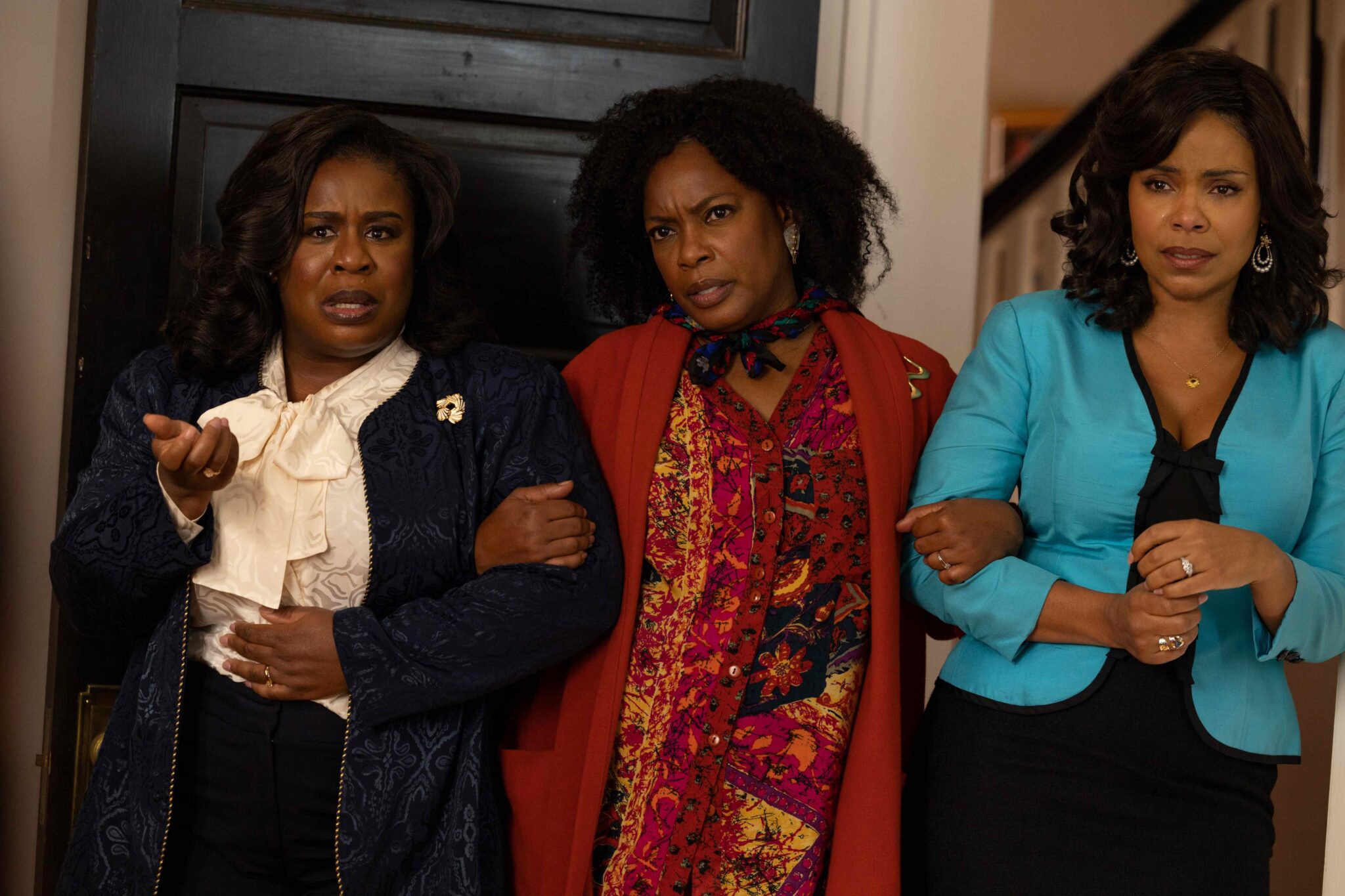The 90s were a kind of renaissance for Black cinema. A wealth of diversity of genres from Black voices erupted through the decade. Movies like How Stella Got Her Groove Back and Love & Basketball, are melodramas through the lens of Black womanhood.
Something Tina Mabry’s The Supremes at Earl’s All-You-Can-Eat seems to be channeling. Granted with a title like that it also reminds me of movies with titles like The Englishman Who Went Up a Hill But Came Down a Mountain, that almost didn’t fit on the VHS box. The Supremes neverending title isn’t that bad but it’s pretty close.

Though in the film’s defense, the title is from the book of the same name by Edward Kelsey Moore. The ungainly and overly literary title aside, The Supremes aims to be a simple story about the trials and tribulations of the lives of three Black women. The biggest problem Mabry and her co-writer, Cee Marcellus, face is figuring out how to shake loose its literary roots. Because The Supremes is too stacked with talent onscreen to be called bad. But its tortured melodrama at times becomes overwrought and runs the very real risk of misusing the talent on display.
The Supremes spans from the 70s to the modern day set in Plainview, Indiana. Starring Aunjanue Ellis-Taylor, Uzo Aduba, and Sanaa Lathan as the three women Odette, Clarice, and Barbara Jean; the story attempts an almost inspirational look at their lives. It’s a tone that is at odds with some of the melodramatic elements that happen later in the film.
Mabry is an interesting talent. She wrote the 90s indie Queer classic The Itty Bitty Titty Committee and has written and directed on the television show Queen Sugar. She has a great talent for deftly drawing characters with dialogue. For the most part, she and Marcellus do a good job weaving the past into the present. The problem is the scope which is meant to feel sprawling but instead comes off as very narrow.
For example, Ellis-Taylor’s Odette has children with her loving husband James (Mekhi Phifer). How many children they have or even who they are we never see. There’s a lot of talk about family in Mabry and Marcellus’s script but we see almost no evidence of it throughout the film. That is except for Lathan’s Barbara Jean’s son but that’s only because his fate ties directly into her tale of woe. Barbara Jean is the Job of The Supremes. Which for a movie that has one character diagnosed with non-Hodgkin Lymphoma, is saying something.
Mabry succeeds in showing how the young girls full of life grew up to be the strong women they are today. Young Odette (Kanyan Simone), Barbara Jean (Tati Gabrielle), and Clarice (Abigail Achiri) are all perfectly cast and do a splendid job of showing us the unformed teenage versions of their adult selves. The problem is that for the sake of brevity, Mabry and Marcellus will skip crucial steps in a character’s journey.
The put-upon Barbara Jean is shown to be an alcoholic later in life. We know why she is an alcoholic but we never see her becoming one. Instead, Mabry merely shows us Barbara Jean before and during the traumatic incidents before fast-forwarding to the present where she’s so far gone she’s driving drunk and peeing her pants. The escalation of her alcoholism is skipped over. Blessedly Lathan and Gabrielle are so good in their roles that they overcome this hurdle. Still, it’s shortcuts like these that hamper some of the dramatic effects of the story.

Still, I quite admire the way Mabry didn’t shy away from the sex scenes. The main one is between Aduba and her husband Richmond (Russell Hornsby). Mabry and her cameraman Sean McElwee don’t shy away from these tender moments and are edited by Tariq Anwar’s sensual and mature cuts giving us the feeling of two people reconnecting after a long time apart.
McElwee’s camera is polished and brings out the colors of the costumes of Mabry’s vibrant costume choices. But the thing that hobbles The Suprmes is how it never feels like a movie so much as a made-for-TV movie. McElwee uses the camera as a recording device and little else. Yet, Mabry and McElwee are shrewd enough to never get in the way of their actors.
Which when you have the likes of Aduba, Ellis-Taylor, and Lathan, why would you? Time and time again what saves The Supremes are the loud and proud performances of the leads. Whether it’s in the 70s or the present there’s a vivacious energy in their presence, a spark of something dangerous as they interact.
The Surpemes doesn’t fully work for my taste. But the fleshed-out performances, the specific sense of place and time that Mabry captures, is enough to take a step back and recognize talent when you see it.
Images courtesy of Searchlight Pictures
Have strong thoughts about this piece you need to share? Or maybe there’s something else on your mind you’re wanting to talk about with fellow Fandomentals? Head on over to our Community server to join in the conversation!

